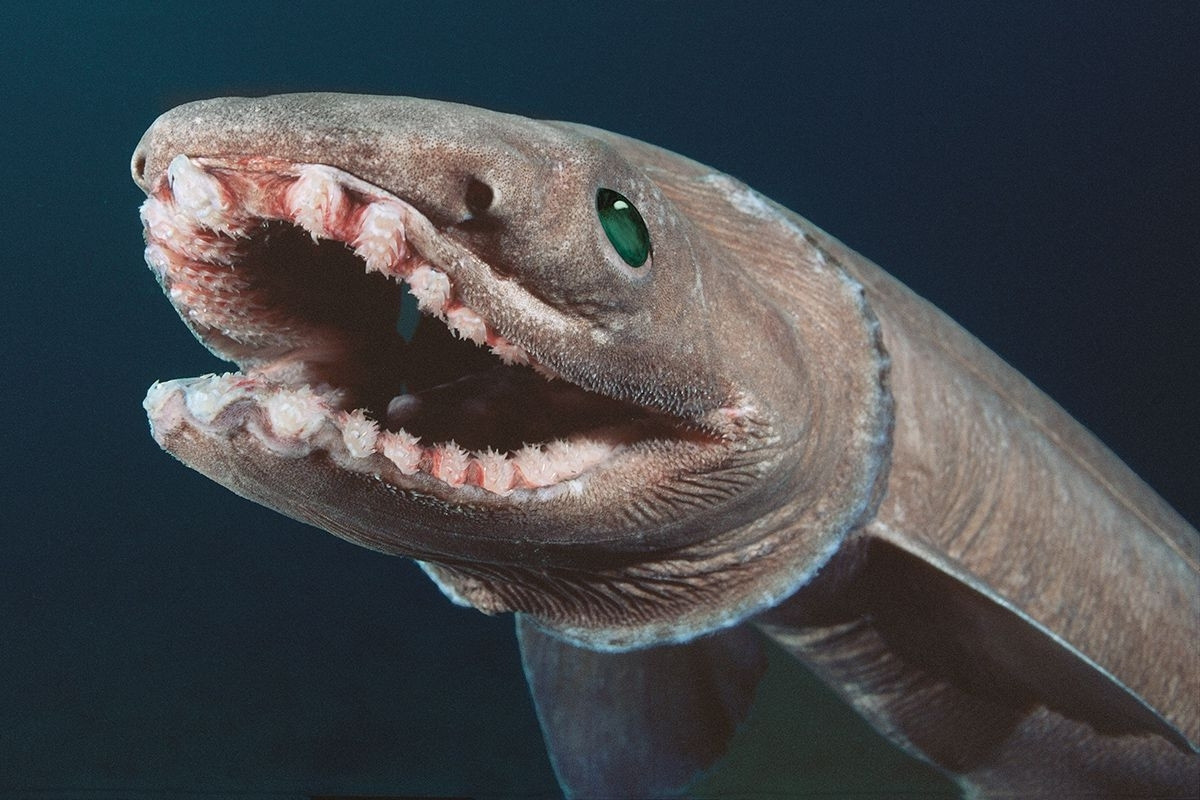
Did you know the frilled shark is often called a "living fossil"? This ancient creature has been around for about 80 million years, surviving alongside dinosaurs. Found in deep ocean waters, it has a unique eel-like body and six pairs of frilly gills, which give it its name. Unlike most sharks, it has a flexible jaw that allows it to swallow prey half its size. Its teeth are needle-like, perfect for catching slippery fish and squid. Despite its fearsome appearance, the frilled shark is rarely seen by humans, making it one of the ocean's most mysterious inhabitants. Dive into these 35 fascinating facts about this prehistoric predator!
Meet the Frilled Shark
The frilled shark is a fascinating creature that has intrigued scientists and ocean enthusiasts alike. Known for its prehistoric appearance and elusive nature, this deep-sea dweller holds many secrets. Let's dive into some intriguing facts about the frilled shark.
- The frilled shark is often referred to as a "living fossil" due to its primitive features that have remained unchanged for millions of years.
- It gets its name from the six pairs of frilly gill slits that resemble a ruffled collar.
- This shark can grow up to 6.6 feet (2 meters) in length, although most are smaller.
- Unlike most sharks, the frilled shark has a long, eel-like body that allows it to move gracefully through the water.
- Its mouth is filled with 300 trident-shaped teeth arranged in 25 rows, perfect for snagging slippery prey.
- The frilled shark's diet mainly consists of squid, fish, and other small marine animals.
- It can swallow prey half its size thanks to its extremely flexible jaws.
- This shark is known to inhabit depths ranging from 160 to 660 feet (50 to 200 meters), but it has been found as deep as 5,150 feet (1,570 meters).
- The frilled shark's reproductive process is unique; it has a gestation period that can last up to 3.5 years, the longest of any vertebrate.
- Females give birth to live young, usually between 2 to 15 pups at a time.
- The frilled shark's slow reproductive rate makes it vulnerable to population decline.
- It has a wide distribution, found in the Atlantic and Pacific Oceans, but sightings are rare due to its deep-sea habitat.
- The frilled shark's scientific name is Chlamydoselachus anguineus.
- Its first scientific description was published in 1884 by German ichthyologist Ludwig Döderlein.
- The frilled shark's brain is relatively small compared to its body size.
- It has a large liver filled with low-density oils, which helps it maintain buoyancy in deep waters.
- The frilled shark's skin is covered in tiny, tooth-like structures called dermal denticles.
- These denticles reduce drag and protect the shark from parasites and injuries.
- The frilled shark's eyes lack a nictitating membrane, a protective eyelid found in many other sharks.
- It relies on its keen sense of smell to locate prey in the dark depths of the ocean.
- The frilled shark's movement is often described as serpentine, resembling that of an eel or snake.
- It is believed to be a slow swimmer, conserving energy in the nutrient-scarce deep sea.
- The frilled shark's coloration ranges from dark brown to gray, providing camouflage in its deep-sea environment.
- It has been observed to perform a unique hunting strategy, coiling its body and lunging at prey like a snake.
- The frilled shark's teeth are designed to trap prey, making it difficult for them to escape once caught.
- It is considered a rare species, with few specimens ever captured or observed.
- The frilled shark's elusive nature has made it a subject of many myths and legends among sailors.
- Despite its fearsome appearance, the frilled shark poses no threat to humans.
- The frilled shark's skeleton is made of cartilage, like other sharks, which is lighter and more flexible than bone.
- It has a single dorsal fin located far back on its body, unlike most sharks that have two dorsal fins.
- The frilled shark's pectoral fins are small and rounded, aiding in its eel-like movement.
- It has a unique method of respiration, using its gill slits to pump water over its gills while remaining stationary.
- The frilled shark's stomach can expand significantly, allowing it to consume large meals when food is available.
- It is often caught as bycatch in deep-sea fisheries, posing a threat to its population.
- Conservation efforts are challenging due to the frilled shark's deep-sea habitat and elusive nature.
The Frilled Shark: A Living Fossil
The frilled shark is a fascinating creature that has captured the curiosity of many. With its prehistoric appearance and unique features, it offers a glimpse into the ancient world. This deep-sea predator, often called a "living fossil," has remained relatively unchanged for millions of years. Its serpentine body, frilled gills, and needle-like teeth make it a standout in the ocean's depths.
Understanding the frilled shark helps us appreciate the diversity and complexity of marine life. These sharks are rarely seen by humans, adding to their mystique. They remind us of the vast, unexplored territories that still exist in our oceans.
Next time you think about the ocean's mysteries, remember the frilled shark. It's a testament to the endurance and adaptability of life on Earth. Keep exploring, stay curious, and who knows what other wonders await discovery.
Was this page helpful?
Our commitment to delivering trustworthy and engaging content is at the heart of what we do. Each fact on our site is contributed by real users like you, bringing a wealth of diverse insights and information. To ensure the highest standards of accuracy and reliability, our dedicated editors meticulously review each submission. This process guarantees that the facts we share are not only fascinating but also credible. Trust in our commitment to quality and authenticity as you explore and learn with us.
